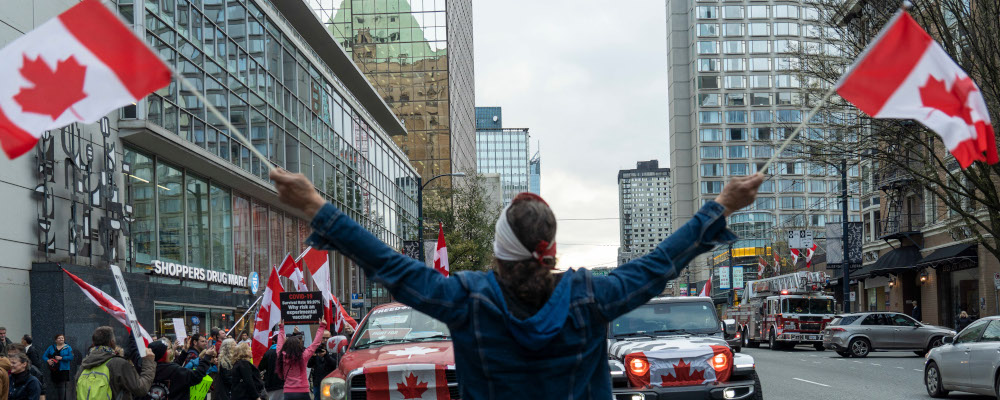Today Lakehead University economist and regular Hub contributor Livio Di Matteo tracks the historical trend line of the so-called “Misery Index” (an economic measurement that combines the inflation and unemployment rates) to find that notwithstanding the public’s current anxieties and agitation, the index is actually below historical norms. He therefore asks the seemingly reasonable question: “Why are Canadians feeling so miserable given that by historical standards, the misery index is nowhere near past historical peaks”?
As Di Matteo observes, a key explanation is that the misery index doesn’t fully capture how people feel about the economy, their own circumstances, or the state of the country as a whole. He speculates that we may need a broader measure that accounts for the growth of real GDP per capita or disaggregates certain inflationary trends such as food or housing.
More data may help but one gets the sense that the disconnect that he identifies runs deeper than a basket of statistics. It may instead be explained by the inherent differences between our individual circumstances and our collective outlook. These same differences also manifest themselves on another level in the subtle yet important distinction between misery and despair.
Misery is typically defined as a “state of suffering and want that is the result of poverty or affliction.” Despair, by contrast, is “the loss of hope or confidence.” The former is more of an individual expression of need. The latter generally conveys a collective pronouncement of doubt. Canadians may not be miserable. But they are despairing.
Conservative Party leader Pierre Poilievre seems to understand these differences. He notably hasn’t tended to use the word “misery” to describe Canadians or the state of the country. Instead, he’s talked about how Canada “feels broken.” His formulation connotes a collective problem—a sense that the country as a whole faces common challenges and in turn is stuck in a shared malaise.
That might help to explain the marked shift in public support from the Liberals to the Conservatives in recent weeks. It doesn’t merely reflect a change in individual attitudes but rather signals a broader movement in our collective perception of Canada’s economy and society.
In order to understand this fast-moving disquiet unfolding across the country, one needs to account for its chief cause: the cumulative burden of the Trudeau government’s policy failures.
The most profound is Canada’s declining GDP per capita. The country’s living standards have effectively fallen for six consecutive years for just the third time in more than sixty years. The future doesn’t look much brighter either. Long-run projections anticipate that they’ll remain stagnant in the coming decades. As economists David Williams and Jock Finlayson recently wrote: “Young and aspirational Canadians face 40 years of stagnant average real incomes. The only way to feel confident about future living standards is to avoid looking at the data.”
These gloomy trends strike at the heart of the Trudeau government’s core assumptions. It came to office in 2015 purporting to have a new way of thinking about economic policymaking that would place an emphasis on inclusion and then growth would follow. What we’ve gotten instead is broad-based stagnation that has failed to deliver on either goal.
Yet the Canadian malaise isn’t merely an economic story. It’s also evident in other parts of our society.
A major one is the fragility of Canada’s health-care systems. Even though the pandemic has officially ended, we still face a wait-time crisis across the country. Everyone knows someone who has spent hours of agony in an emergency room or had an illness go undiagnosed or untreated due to long delays. As a Toronto-based physician wrote this summer: “This perpetual cycle is not news to most people in Canada, as it is pervasive, has lethal consequences and will continue to exhaust Canadian emergency services and providers.”
The Trudeau government’s health-care spending deals with the provinces have failed to arrest these trends or produce meaningful results more generally. They instead reflect the government’s reductionist view that the number of zeroes in a press release is tantamount to solving a problem. Public borrowing is relatively easy. Public administration is hard.
So, too, apparently is keeping track of how many people are in the country. The government recently conceded that its method of counting non-permanent residents (such as those on student or work visas) is flawed and has led to an undercounting of about 1 million people per year.
And that’s hardly the sole problem in the country’s immigration system. The monthly application backlog has averaged as many as 860,000 so far this year. These numbers are actually down from a peak of more than two million late last year—though the reduction has not primarily come through efficiency or improved processes but simply by waiving eligibility requirements for hundreds of thousands of applicants.
There are also growing concerns about the proper settlement of refugees in light of reports about them sleeping on the streets of the country’s major cities. The prime minister has called these developments “unacceptable in a country like Canada” but he seemingly fails to recognize that they reflect his own government’s top-down immigration targets that have essentially left provinces and cities struggling to fulfill Ottawa’s fantastical promises.
The list of failures invariably goes on and on. The Hub has comprehensively covered the housing crisis in which one must now belong to the top 10 percent of income earners in order to aspire to own a home in the Greater Toronto Area, as well as the alarming crime and substance abuse problems exhibiting themselves in big and small communities across the country.

Then there are more elementary signs of state-capacity challenges that have left doubts about whether the Trudeau government’s run-up in federal spending has come with any attendant improvements in its state capacity. Last year’s passport delays (which the prime minister similarly called “unacceptable”) and the 67,400 percent increase in the cost of the ArriveCan app (which incidentally he called “highly illogical and inefficient”) have become symbols of Ottawa’s basic dysfunction. Although they may not be hugely consequential in and of themselves, they convey a broader story of failure to tax-paying citizens.
These cumulative government failures must be understood as collective ones. They may not directly affect most of us. But they do so indirectly by contributing to a narrowing of our shared expectations for the government and ourselves. A common measure is our declining trust in institutions—including the government itself. Perhaps a more troubling one is our diminished views about the future.
This raises what may seem like a paradox to some. As the government has grown, its failures have perhaps counterintuitively become more ubiquitous, and the public’s hope and trust have suffered as a result. The net result is the malaise in which we now find ourselves. We know in other words what the Trudeau government’s unprecedented deficits and debt have bought us: despair.
But in hindsight it was a highly predictable outcome. The Trudeau government’s unconstrained vision was destined to run up the federal debt and undermine the basic functioning of the national government. As the old public policy axiom goes, if you have too many priorities, you ultimately have none. It’s been a painful education for the prime minister, his government, and the rest of us.
A “despair” index is harder to measure than a “misery” one but it may more accurately capture the current public mood and answer Di Matteo’s confounding question. We’re feeling collectively down. And the Trudeau government’s cumulative failures are the cause.
Recommended for You

Ginny Roth: J.D. Vance, Pierre Poilievre, and how they slice their economic pie

David Polansky: As President Biden leaves the race, will the Democratic Party hodgepodge hold?

RCMP spending to protect MPs may have risen 112% since 2018, as Canadian politicians face greater rise in threats

Trevor Tombe: Canadians are paying billions in hidden taxes on new homes










